Pros
- Free
- Reasonably good scores in tests related to malicious URL blocking
- Excellent performance in various phishing protection tests.
- Above average independent lab results
- features such as remote management available for users for up to three Mac machines or Windows computers
- Download protection
Cons
- Lab test results are not up to date and hence old.
- Does not score high enough in hands-on malware protection tests.
Table of Contents
Bottom Line
As the name suggests Sophos Home Free is for home users who want to avail antivirus protection that is usually found in the company’s business security tools.
These include some advanced features such as remote management for users who have up to three installations.
Sophos Home Free Full Review
Antivirus companies, in order to maximize their profits, usually try to cater to both the business markets and the consumer markets.
That is, most major players in the antivirus product market.
Sophos, is one of those antivirus product companies.
As far as the main focus of the company is concerned, Sophos is clearly targeting business clients.
But that doesn’t it has nothing to offer to consumers.
In fact, it offers consumers more or less the same business-grade security and antivirus protection.
The company offers that via products such as Sophos Home Free.
That is probably the reason why Sophos Home Free manages to earn more than a decent score in various review site’s antiphishing tests.
With that said, it is also true that Sophos Home Free does not as well in various hands-on malware protection tests.
And while the company’s Sophos Home Free manages to score well enough in independent lab results, those results aren’t current.
Even with that, there is little doubt that Sophos Home Free deserves some consideration.
That is especially true for users who have this need of managing multiple (usually other users’) free antivirus protection as well.
Home users are different than business users.
Employees usually have to work hard and hence don’t have the time to manage their own online security.
Or their own available security tools.
That’s how most people differentiate between consumer and business settings.
Employees can usually let the IT department of their company to handle these security tasks via remote methods.
Therefore, no one should find it surprising that Sophos Home Free makes security configuration a mostly online affair.
The Sophos Home Free subscription (which doesn’t cost users anything ) enables users to install Sophos Home Free security product on three separate systems.
Users can decide if they want to protect Windows machines or Mac computers within their 3 machine limit.
Sophos Home Free makes it easy for users to manage their systems via an online interface.
To take an example, if a user has an aging computer belonging to a relative, then the user can simply install Sophos Home Free on the computer.
And then view and manage the security events that pop up on that computer remotely.
Sophos also has the Sophos Home Premium security solution.
It works on the paid subscription model.
And since users have to pay the company to use its protection, it allows users to manage up to 10 of their devices.
In other words, the Sophos Home Premium subscription package offers the ability to have 10 installations with a single account.
Installation Process
Our research shows that if you test Sophos Home Free on any modern computer machine, you will find the process to be pretty simple.
For the convenience of the users, the installation wizard warns users that the installation process would normally take about five or so minutes.
Our research shows that it does take that amount of time to reach its completion stage.
User Interface
The main window is very simple.
It reports the current security status of the machine.
The main interface also offers users two huge buttons.
One of the buttons allows users to scan their machine for malware.
The other button enables access for users who want to manage their security settings.
When you click the Settings button, it takes you to Sophos Home Free’s online management console.
Our research has verified that any changes that the user made via the online panel took effect pretty quickly.
To take an example, users can turn off the product’s real-time protection.
When they do turn it off the status panel of the software application changes.
It warns the user about the Settings changes.
Our research shows that Sophos Home Free recognizes and reports on the changes in less than a total of 10 seconds.
Lab Results And The Accompanying Hiatus
To test any security product’s reliability one has to look towards independent testing labs.
This allows one to check each antivirus product and its utilities based on evidence rather than an expert’s opinion.
Independent lab results give you a good indication of a security product’s protective abilities.
Now, there are a lot of independent testing labs out in the open.
Which ones should you follow and trust?
Well, our research shows that independent testing labs such as,
- MRG-Effitas,
- SE Labs
- AV-Comparatives
- AV-Test Institute
are the independent testing labs that you should start following.
Why do we prefer these four independent testing labs over all others?
We have many reasons for choosing these independent testing labs.
These independent testing labs have hired researchers to put security products through grueling security tests.
After performing those tests, they report the effectiveness of these security products.
Needless to say, testing security products is not a trivial undertaking.
In fact, you need to start and then complete some big operations in order to evaluate security products properly.
The other problem with testing security products is that these tests require a lot of resources.
No review site, including Security Gladiators, can hire reviewers who can bring in sufficient resources to bear on a given security product.
Hence, we have to give much more attention to independent testing labs and their findings.
Now, perhaps we should mention this right now that Sophos Home Free did manage to score good ratings in the past.
In 2017, Sophos Home Free managed to earn an AAA certification from an independent testing lab called SE labs.
SE labs awards security products a total of five certification levels.
And Sophos Home Free managed to earn the highest of those certification levels.
AV-Test also tested Sophos Home Free about a year ago.
And back then it managed to score a solid 17.5 out of 18 possible points.
So what’s wrong with that?
Nothing.
Except for the fact that Sophos Home Free has somehow managed to vanish from the latest reports that have come out of the independent testing labs that we follow.
Some experts in the field say that independent testing labs such as AV-Test Institute have changed products.
What do we mean by that?
We mean that the testing lab has tested Sophos.
But not its Home Free edition.
It has tested the company’s business-facing security product.
That security product goes by the name of Sophos Endpoint Protection.
AV-Test Institute assigns six points for its three categories regarding each security product that it tests.
Sophos Endpoint Protection managed to earn 5.5 for its protective ability against malware.
It also earned a 5.0 for its low-performance impact.
AV-Test Institute scored a perfect 6.0 for the very few false positives that it reported.
Sophos representatives will tell you that the company has definite plans to participate in tests that start in 2018.
If that is indeed true then we look forward to seeing Sophos Home Free edition taking part in these tests and reading its performance reports.
Other security products such as Kaspersky and BitDefender both earn outrageously high marks year in and year out for virtually every independent testing labs that we follow.
One could easily create an algorithm which would map all the independent testing lab results to a scale of 0 to 10.
After that, it should be easy for anyone to derive a, sort of, aggregate score.
Our research shows that using that algorithm Kaspersky scores 10 out of 10.
That is, perfect.
Kaspersky is about as good as it gets when it comes to protection, low impact, and few false positives.
But Kaspersky’s perfect score does come with an asterisk.
Kaspersky Free edition, which is great in its own right, doesn’t really include many of the premium features that users get with the paid Kaspersky product.
Hence, Kaspersky free edition would not be able to score high marks in independent lab tests and/or the above-mentioned algorithm.
Our own research regarding hands-own testing told us that the Kaspersky Free edition indeed did not offer as much protection and ease of use as the paid version of the same product.
Bitdefender has always scored near-perfect scores.
It has consistently earned aggregate scores of 9.9 throughout the last couple of years.
But recently, it has lost some of its edge.
Even in that state, it still manages a good 9.0 score.
This score is coincidentally the same as Avast has achieved.
Perhaps this is a good place to mention that just like Kaspersky Free edition, Bitdefender Free edition also may not fare as well as the paid security product when it comes to above-mentioned aggregate score and independent lab results.
We have already mentioned the fact that user can install Sophos Home free both on their Mac machines as well as Windows boxes.
AV-Test also gave a certification to Sophos Home Free for the Mac, and we are happy to report that Sophos Home Free provided 100 percent protection against all types of malware on the Mac platform.
Moreover, Sophos Home Free also performed exceptionally well on the Windows platform.
It eliminated more than 99 percent of all malware found on the Windows platform.
Along with that, Sophos Home Free got rid of more than 95 percent of Potentially Unwanted Applications or PUAs on the Mac.
More Hands-On Testing For Malware Protection
Sophos Home Free tries for simplicity whenever it can.
Hence it doesn’t have multiple scan types.
The company simply refuses to bother with that kind of stuff.
When the user performs a click on Scan My Computer option, Sophos Home Free simply launches the full scan.
We always recommend that users should always go for a scan moments after they have finished the installation process for any security product.
Moving forward from the initial scan, the real-time protection from Sophos Home Free should prove enough to handle any new kind of malware attack.
So what about scan times?
Well, these vary depending on how new your machine is and how much junk you have on your system.
So on a clean standard system, the Sophos Home Free system scan should go quickly enough.
At least in its initial stages.
Unfortunately, our research shows that even though the scan starts quickly enough, it slows down considerably enough once it goes past the 90 percent mark.
The full system scan actually finishes just inside 45 minutes.
Now, for a lot of users, this way sound a lot.
But consider the fact that the industry average currently stands at around 52 minutes.
So having a scan time of less than 45 minutes is decent enough.
Some antivirus security products and utilities try to use the initial system scan in order to mark down known safe folders and files.
That allows such products to perform subsequent scans much more quickly because they don’t have to scan those safe files and folders again.
This technique results in a drastic reduction of the total time it requires for any given scan.
To take an example, Norton antivirus initial scan takes about two hours.
Some say it is close to an hour and 50 minutes, but let’s just round that off for a bit.
Now, even though the first scan takes close to 2 hours, our research shows that its subsequent scans only take around 15 minutes.
That is a staggering amount of time reduction.
Our observational experience tells us that Sophos Home Free does not go this far in its attempt to optimize scan times.
Sophos Home Free repeat scans take almost as long as the first system scan.
Our research for this Sophos Home Free review also tells us that if the user opens a folder that contains a given malware collection, Sophos HOme Free will start to delete the malware samples that it recognizes.
Whenever it gets rid of a malware or detects one, Sophos Home Free slides in a popup (albeit a transient one) in the top right corner of the user’s screen.
The good thing about these pop-ups is that they don’t stay visible for long enough to become a headache rather than something useful.
Our research for this Sophos Home Free also tells us that while this security product took care of many samples and detected even more by removing them from the malware collection folder, it left some out.
In other words, it removed many on detection.
But it left out a few as well.
As it turns out, if the user goes to the online account dashboard/console, Sophos Home Free will display a length list of Potentially Unwanted Applications or PUAs.
The console will then require the user to make a decision and decide the fate of the Potentially Unwanted Applications that it found via its system scan.
In order to clean them all, the user only has to perform a single click.
After that, the user is free to go to the History page and view the complete list of all the threats that Sophos Home Free removed from the user’s system.
Our research for this Sophos Home Free tells us that it should remove over 70 percent of all malware samples on sight.
As you can probably tell, that is a decent percentage.
But it isn’t great.
Especially when we compare Sophos with a giant like Symantec Norton Antivirus Basic.
The Norton Antivirus Basic edition can remove around 96 percent of all samples at detection time.
It is also a good idea to maintain a second set of malware samples as well.
The second set basically contains the original malware samples but with some modifications.
Moreover, to further make the test hard on a security product one could also change the name of each of the sample for the second test.
Changing the size of the file is also a good idea.
The easiest ways to do that is to append multiple zeros to the original file size.
Then one can also tweak a few non-executable bytes.
Our research shows that Sophos Home Free handles the second set a bit worse than the first set.
Sophos Home Free did manage to wipe out some of the second set malware samples.
But it did not manage to wipe the majority of them.
To put it in simpler terms, the tweaked samples managed to get by more easily than the original malware samples.
In fact, Sophos Home Free let go of more than half of the modified versions of the original samples at the initial inspection stage.
In the first test, Sophos comprehensively whacked more than 70 percent of them at first sight.
Of course, that isn’t terrible news.
Why?
Because the antivirus product does get another chance to look at the file and detect some more malware samples once the user opens the file and tries to launch one of the samples.
The other positive thing about Sophos Home Free is that even though it missed some samples it did not miss any modified samples that were actually ransomware.
And since ransomware is the most annoying online security threat, Sophos Home Free has plenty of firepower to attract more customers to its products.
To finish off the testing, it is always a good idea to launch each of the malware samples that a security product does not catch in its initial antivirus purge.
Our research shows that Sophos Home Free managed to strip the provided bundle of malware from a couple of other samples.
In other words, it did not delete the whole provided package.
This means it pays more attention to deleting just the malware samples rather than everything surrounding the malware sample.
That is very positive.
Of course, it also managed to miss a few of them.
In one of the cases, Sophos reported that the security product had actually blocked the installation of a detected Potentially Unwanted Applications.
And then kept on repeating the same message.
What does that indicate?
That indicates the presence of another malware component that actively ran in the background.
And attempted to launch the installation of the PUA repeatedly.
In an ideal scenario, Sophos should have caught both the PUAs.
Our research shows that if someone were to total the Sophos results, Sophos would hit the detection rate of 90 percent quite easily.
That is, Sophos Home Free would detect about 90 percent of any malware samples thrown at it.
And hence we would score in above eight out of 10 possible points.
This may not be the highest score ever recorded by an antivirus product but it is good enough.
Sophos Home Free managed to score the same as Trend Micro.
And most of all, it beat Microsoft Windows Defender Security Center.
But only barely.
Now, we have already mentioned that Sophos Home Free’s score isn’t all that great.
The other problem with reviewing Sophos is that we don’t really have any recent lab test reports to make use of and grade Sophos against other antivirus software applications.
Even with that, we would have to rank Sophos high enough because of its previous successes.
And the fact that it managed to score high marks in some of its other business products.
It is also true that good performances from Sophos other security products and its previous performances may well have offset the actual score of Sophos Home Free.
Our research shows that if you take the same set of malware samples and feed them to other antivirus products like Webroot and/or Norton, they would score higher.
How much higher?
Well, our research says that Norton and Webroot both can potentially manage 100 percent detection and protection.
Other free alternatives such as Comodo Antivirus are good enough to achieve similar feats against similar-looking malware sample collection.
Premium antivirus products such as AVG and AVAST managed to score 9.5 and 9.7 on the same scale when tested with the same malware sample collection.
Most modern antivirus utilities come with features that keep users away from a connection with a malware-hosting website.
Sophos Home Free is no different from these modern antivirus products in this regard.
In other words, it does offer a component that keeps users and their web browsers away from connecting to websites that have malware on them.
There is an easy way to test this feature’s effectiveness.
And that is via a large feed of recently emerged (or discovered rather) URLs that host malware.
MRG-Effitas provides the list of such URLs for reviewers to test out various antivirus security products.
Typically the websites listed on such a list are not more than a day old.
Moreover, since these websites contain malware, there are always chances that they might have vanished even before the day has passed.
Some of these sites even remove malware from their content.
Hence it is difficult to really judge which site to test a security product with.
So how do you work through such a feed?
Well, first one has to launch each URL from the complete list of malicious URLs.
Then one has to observe if they are still dangerous.
If they are, then one has to keep a record of whether the antivirus product in question blocked the web browser form visiting the malicious URL.
Good antivirus products not only block users from connecting to such URLs but they also eliminate any malware that the user might have downloaded from such URLs.
Bad antivirus products stay dormant even if the user has connected to such a malicious URL and has downloaded something.
The main aim of this exercise is to see if the antivirus product under testing can detect bad URLs and then do something about them.
Our research showed that Sophos Home Free had the ability to block these malicious and dangerous URLs along with any downloads in five separate and distinct ways.
Sophos showed High-Risk Website Blocked (to the user) within the browser for malicious URLs that had made their way into the blacklist of such websites.
It also displayed the user an identifier.
Users could use the identifier for recognizing the malware that got the malicious URL blocked and blacklisted.
Sophos also slid in a popup warning.
Just like before, this popup warning was transient and hence did not interfere with the user’s normal browsing experience.
Sophos Home Free displays Malicious Content Blocked message when it comes across any new discoveries.
Along with reporting the above-mentioned message it also identifies the malware it has detected.
Among the malicious URL websites, Sophos Home Free displays an error message for the rare ones that come with HTTPS protection.
Again, the only indication that Sophos gives to the user of its work is the transient popup message.
With that said, we did come across cases where it should a huge desktop overlay warning message.
It did that when it activated its reputation-based Download Protection feature.
Even then it showed the users some buttons which allowed the user to go ahead or abort the related download.
Our recommendation is that users should also abort downloads that Sophos shows as dangerous.
This is what we do when we come across such warning messages.
Finally, on the odd chance that none of the Sophos protections came on to the scene and started removing stuff, Sophos has a real-time protection as well.
This real-time protection scans user’s payload for any malware the moment the user starts to download such a file.
Our research tells us that Sophos Home Free can block as much as 92 percent of a sample of 100 malicious URLs.
Among the 92 percent blocked URLs, it steered the web browser away from the malicious URL in 84 percent of the cases.
Moreover, in 8 percent of the cases, it wiped out the user’s payload (ridden with malware) with ease.
That performance is a lot better than some of the more known names in the antivirus applications industry.
However, Sophos’ competitors such as Norton and Trend Micro have posted better scores.
More specifically, Norton has notched up a 98 percent protection while Trend Micro has recently scored an impressive 97 percent.
In the same tests, Avira Antivirus managed to score 95 percent.
Perhaps this is also a good time to mention that Sophos Home Premium doesn’t fare any better than Sophos Home Free.
Our research shows that Sophos Home Premium offers the same total protection rate when stressed under the same test.
But the premium version did improve on one point.
It managed to blacklist more malware samples before they made it to the user’s download phase than Sophos Home Free.
Sophos representatives would tell you that this all makes sense.
Test that involved checking malicious URL websites for malware could well have pushed the website over the tipping point.
And beyond the tipping point, a website has nowhere else to go except to the blacklist.
Good Phishing Protection
Now phishing attacks are different than malware attacks.
Malware attacks have the objective of subverting the user’s device.
A Phishing attack has no such interest.
It basically takes an aim squarely at the device’s user.
Not the device itself.
Fraudsters who make use of Phishing attacks first construct websites.
These websites look very similar to popular websites that we use on a daily basis like,
- PayPal
- Gmail
- The user’s official bank website
- gaming websites
We say that they look very similar to genuine websites, but actually (the majority of the time) they look exactly like genuine popular websites.
Phishing attack fraudsters are banking on one thing:
the user making foolish decisions and entering his/her username and password right into a phishing website.
If the user does fall for the fake site and bites, then the hacker owns the user’s account.
Fortunately, concerned entities do blacklist these sites fairly quickly.
But that doesn’t help much because the actual perpetrators can and do put up new fraudulent websites to trick more users into giving up their financial details.
That basically means that the most dangerous of these fraudulent websites are the ones that are very new.
So new, that they haven’t managed to make it to the blacklist as yet.
How do you test for such fraudulent websites?
Well, you scrape the internet for websites that keep a record of these phishing websites.
And there are many websites that report the newest fraudulent phishing URLs.
The way to test for these is to launch each phishing URL in about five web browsers simultaneously.
One of the web browsers has to have the protection of the security product under testing.
That should be quite obvious.
Another web browser gets the protection of Norton’s phishing protection feature.
Security experts usually go with Norton because it consistently scores excellent marks against phishing attempts.
That takes care of two web browsers.
The rest of the three web browsers have nothing to rely on except for their built-in phishing protection features.
Those three web browsers usually constitute,
- Google Chrome
- Mozilla Firefox
- Internet Explorer
Sophos relies on the same component to protect against phishing websites that is responsible for protecting users against malware-hosting websites and/or URLs.
During our research, we found that almost all of Sophos’ detections made use of the same warning message as before.
Namely, High Risk Website.
That message basically indicates that the URL has successfully shown up on a blacklist.
If there are any new detections, then Sophos will report so.
Though you should only expect a handful of these.
And not more.
Whenever Sophos Home Free encounters a new detection it will identify the threat either as a Phishing attack or Malware.
What happens when the user runs into an HTTPS site?
Well, Sophos, as expected, blocks those as well.
But instead of showing a warning message, it simply displays an error message.
Along with the error message it also shows the transient slide-on notification.
As mentioned before as well, that is the only sign of Sophos Home Free actually working and doing something.
While testing for Phishing protection one has to discard some URLs.
Or the results of phishing URLs.
Why?
Because one always runs into phishing URLs that aren’t exactly true samples of phishing URLs.
While reviewing phishing features, once also has to discard URLs that none of the browsers can access.
So what does our research show as far as results are concerned?
As it turns out Sophos Home Free managed to score very well in this round of testing.
We found it disappointing that more than fifty percent of recent antivirus products couldn’t even perform well enough to beat the basic phishing protection in one or more than one of the web browsers.
About 20 percent of recent security products could not beat any of the web browser’s phishing protection.
Sophos Home Free managed to beat all web browsers as far as phishing protection went.
It has a detection rate that only Norton could best.
In other words, it managed to score just 2 percentage points lower than Norton.
For comparison’s sake, Kaspersky free antivirus scored about 1 percentage point lower than Norton.
Other antivirus products such as ZoneAlarm matched Norton in its phishing protection performance.
But unlike Sophos Home Free, ZoneAlarm is a paid product.
There is also the Check Point ZoneAlarm Free Antivirus Plus.
It doesn’t cost the user anything.
But because it comes for free, it doesn’t have any phishing protection features.
We know quite a few products that have performed even better than Sophos Home Free at phishing protection.
We’re talking about antivirus products such as Trend Micro and Bitdefender Free.
Both of these actually managed to beat Norton’s phishing detection rate.
Bitdefender free beat Norton’s score by a hefty 5 percentage point margin.
While Trend Micro beat Norton by 3 points.
And while we are talking about paid antivirus products, it is imperative that we also talk about Bitdefender’s paid product that comes in the form of BitDefender Antivirus Plus.
The BitDefender Antivirus Plus blew Norton’s score out of the water with a mammoth 12 percentage points lead.
Now that we have talked about the winners in this category, let’s also talk about antivirus products that did way worse than Sophos Home Free.
Let’s take AVG Antivirus Free.
It did not impress us with its phishing protection score the last time we researched its test results related to phishing protection.
In fact, in most previous tests, AVG Antivirus Free generally lagged behind Norton’s score by a good 20 and sometimes even 30 percentage points margin.
We are not entirely sure what happened to AVG Antivirus Free but in the latest round of tests AVG came in behind Norton by a full 70 percentage points.
Now, for those who are concerned about AVG’s performance, there is some good news.
The developers behind AVG Antivirus Free have promised customers and reviewers that they will better their results in the next round of phishing protection tests.
We certainly hope that they stay true to their promise because we’ll be there waiting to test their product’s phishing protection.
Parental Control Feature And Its Limited Nature
Similar to Sophos protection for mac, the Sophos Home Free antivirus product also comes with a simple content filter.
Users can take advantage of its features to apply a certain measure of parental control to any of their or their family’s managed services using the same content filter.
As of this moment in time, the parental control feature offers 28 content categories.
Sophos Home Free further organizes these categories into three different groups.
These different groups come in the form of,
- General Interest
- Social Networking and Computing
- Adult And Potentially Inappropriate
Users have the opportunity to configure Sophos Home Free to enable or disable any category.
They can even block entire groups.
Users also have the option of having the application show the user a warning message against accessing a website that falls into a given category without actually actively blocking the website.
Our research shows that you should expect Sophos Home Free parental control filter to block all racy sites.
Or almost all racy sites.
The parental control is robust enough to handle the famous three-word network command that a lot of users have used in the past to disable some of the best old-school content filters.
As mentioned before, users can set the parental control feature to only warn.
When the user does take advantage of this option, the parental control filter helps the user by stating that a visit to the given site may be unhealthy or inappropriate.
It also points out the fact that if the user acted to proceed with the given site then Sophos parental control will log this activity.
That doesn’t mean Sophos Home Free doesn’t come with any of its own shortcomings.
It does have some significant limitations.
Most modern content filters are independent.
Sophos’ content filter is not.
It has full support for web browsers such as Opera, Internet Explorer, Firefox, Edge, and Chrome.
But when you try to use it on a web browser such as Vivaldi, it doesn’t do anything.
It also cannot handle/filter HTTPS traffic.
All that a clever teen really needs to totally evade Sophos content monitoring and filtering is to use a secure anonymizing proxy service.
Sophos Home Free content filter system also doesn’t bother with forcing Safe Search on its users.
It also makes no effort to cover up those naughty pictures either.
So if the user’s teenager kid has a desire to view nude photos of people, all he/she has to do is to make a simple image search.
And that will do the job.
Sophos Home Free’s content filtering system is simply not strong enough to deal with a determined youth.
In other words, it would do very little to prevent teenagers from ogling nude photos or even viewing violent content.
But it does work well enough to act as a buffer for a younger child.
To put it another way, it can prevent the younger child from accidentally running into some content that isn’t kid-friendly.
Or is just nasty.
The other thing readers need to note here is that users have to configure the content filter on a tedious per-device basis.
Hence, configuring each user account is not going to help much.
Practically speaking that means any filters that the user sets up will affect any and all users.
The only positive thing we can say about that is it comes as a bonus feature and not as a core feature.
Sophos Home Free Conclusion
As far as hands-on malicious URL protection tests go, Sophos Home Free does more than enough.
It earns good marks, in other words.
It also offered great performance on various antiphishing tests.
Sophos isn’t as good at malware protection tests as it is at antiphishing tests though.
That isn’t necessarily a bad thing because Sophos still has good enough scores with various independent labs from previous years.
The only problem with Sophos protection at the moment is that it hasn’t managed to appear in any of the latest test reports from any of the four independent testing labs that we like to follow.
However, we expect Sophos to make a successful return in 2018.
Avast Free Antivirus along with AVG Antivirus Free appear in all of the tests that independent testing labs have conducted in their latest round of tests.
And that is a good thing.
Both antivirus products score high marks whenever they go through the rigorous testing regimes at the four independent testing labs that we follow.
That is why we recommend Avast Free Antivirus and AVG Antivirus Free to most users for their antivirus utility needs.
Now, readers should also know that Avast acquires AVG some time back.
Both antivirus products now make use of the same underlying engine with which they perform their antivirus duties.
But they do retain their own distinguishing features and qualities even though they use the same antivirus engine.

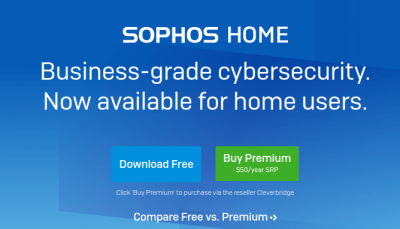
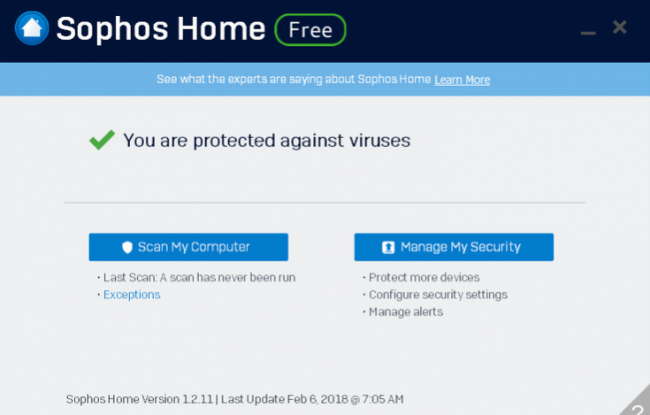
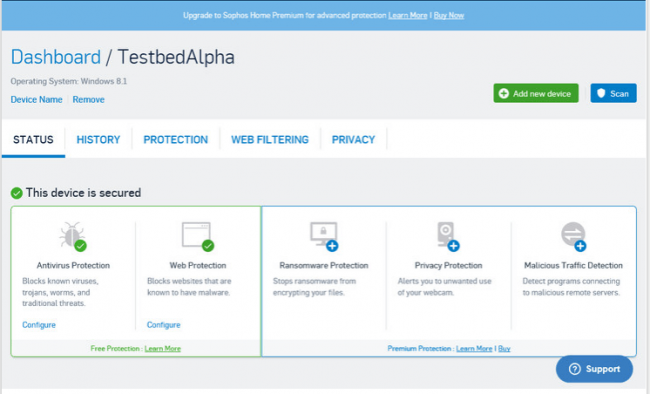
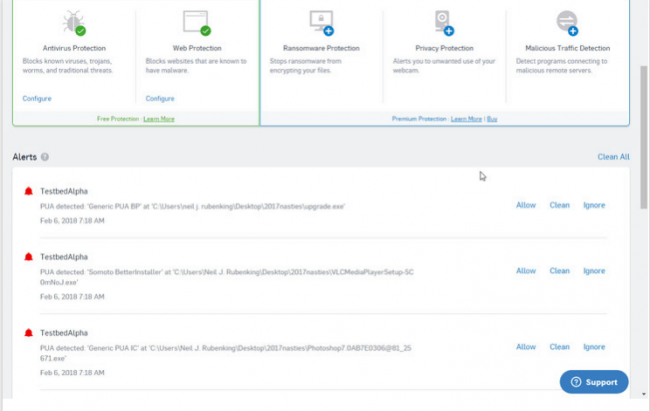
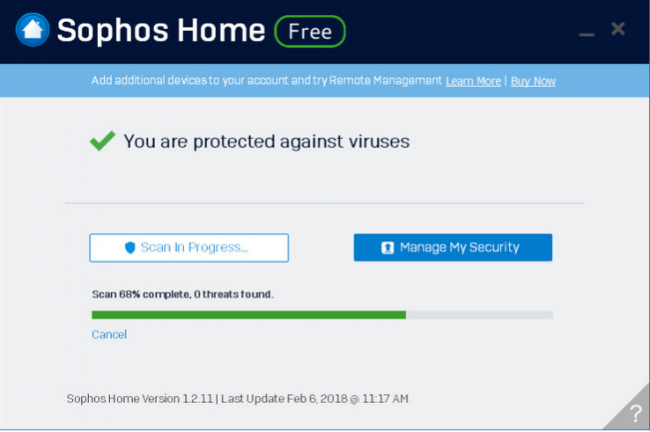
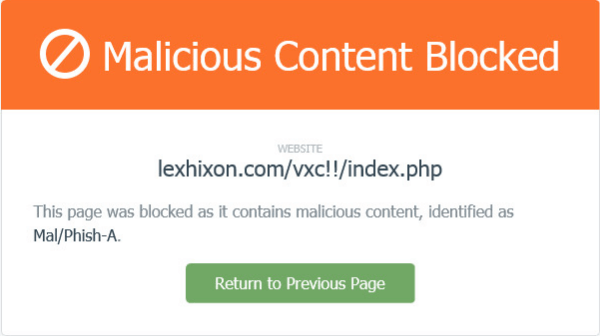

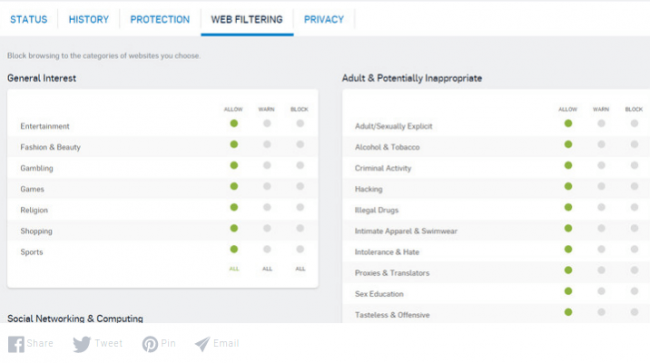

EVEN WITH PICTURE THIS ARTICLE SUCKS
Thank you for the feedback John.
Please provide us more specifics so we can serve our readers better.
Excessively long and just badly written as a tech article
Thank you for the feedback John.
We’ll try to improve our tech articles so that they may serve you better.
how to download it for free pls share link
HI Rajini.
Thanks for the comment.
Go to the official website of Sophos Home Free.